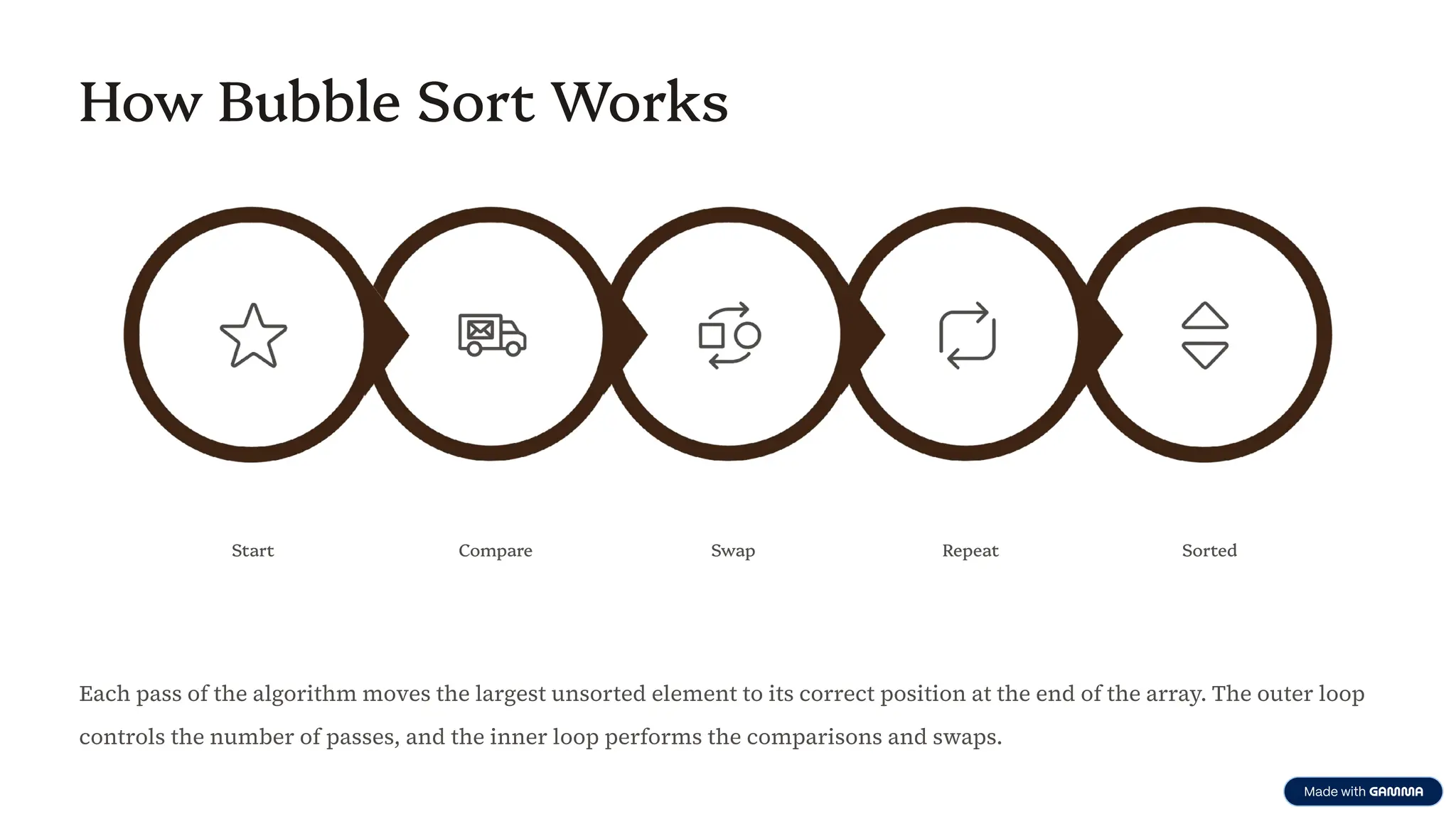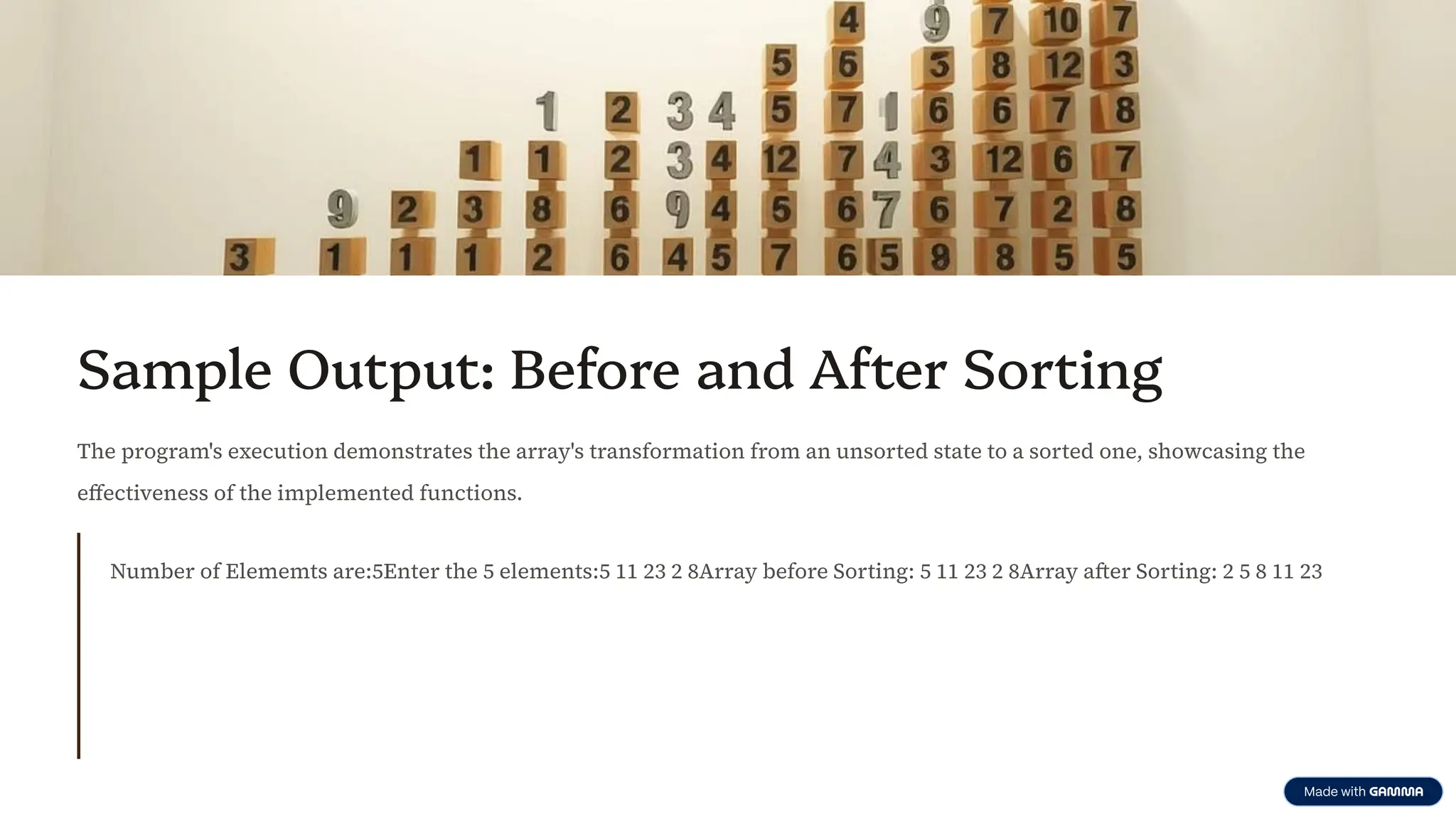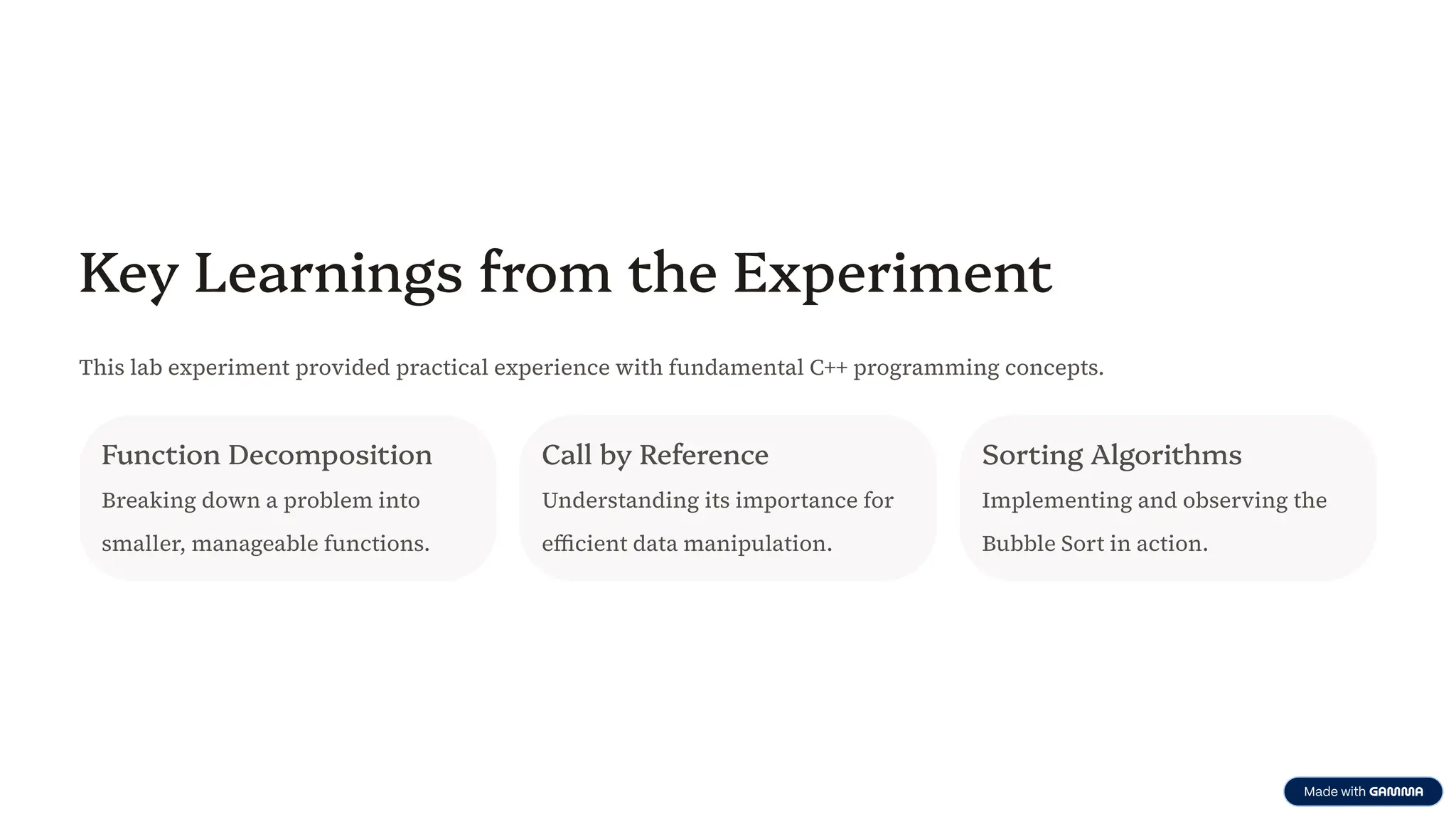A simple algorithm that repeatedly steps through the list, compares adjacent elements and swaps them if they are in the wrong order. The pass through the list is repeated until no swaps are needed, which indicates that the list is sorted.
Selection Sort:
This algorithm repeatedly finds the minimum element (from the unsorted part of the array) and puts it at the beginning of the unsorted part.
Insertion Sort:
Builds the final sorted array one item at a time. It iterates through the input elements and builds a sorted list by inserting each element into its correct position in the already sorted part of the array.
Merge Sort:
A divide-and-conquer algorithm that divides the unsorted list into n sublists, each containing one element (a list of one element is considered sorted). Then, it repeatedly merges sublists to produce new sorted sublists until there is only one sublist remaining.
Quick Sort (Manual Implementation):
While qsort() uses quicksort, you can also implement it manually. It picks an element as a pivot and partitions the array around the pivot, such that elements smaller than the pivot are on one side and elements larger than the pivot are on the other. It then recursively sorts the two sub-arrays.
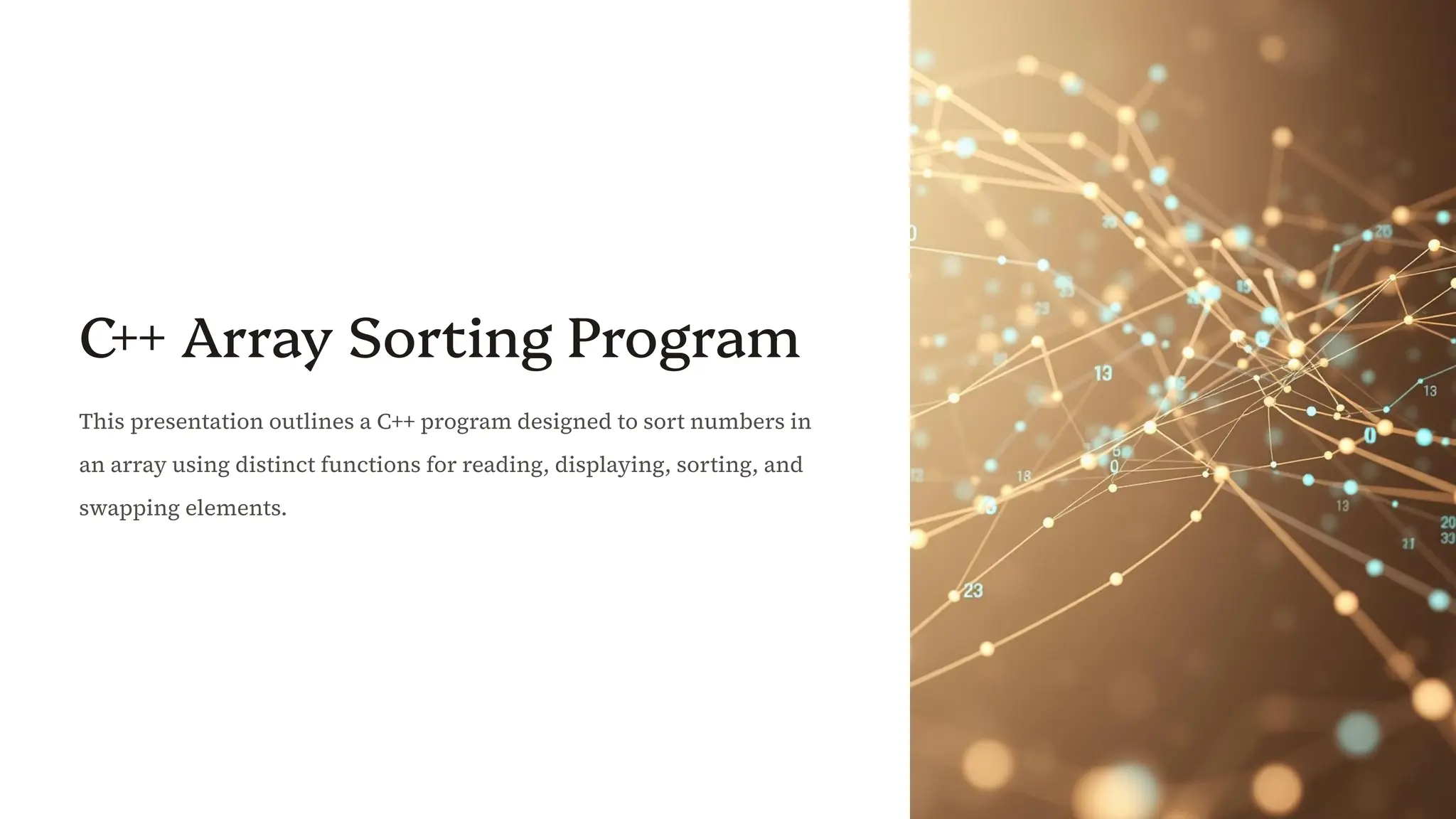
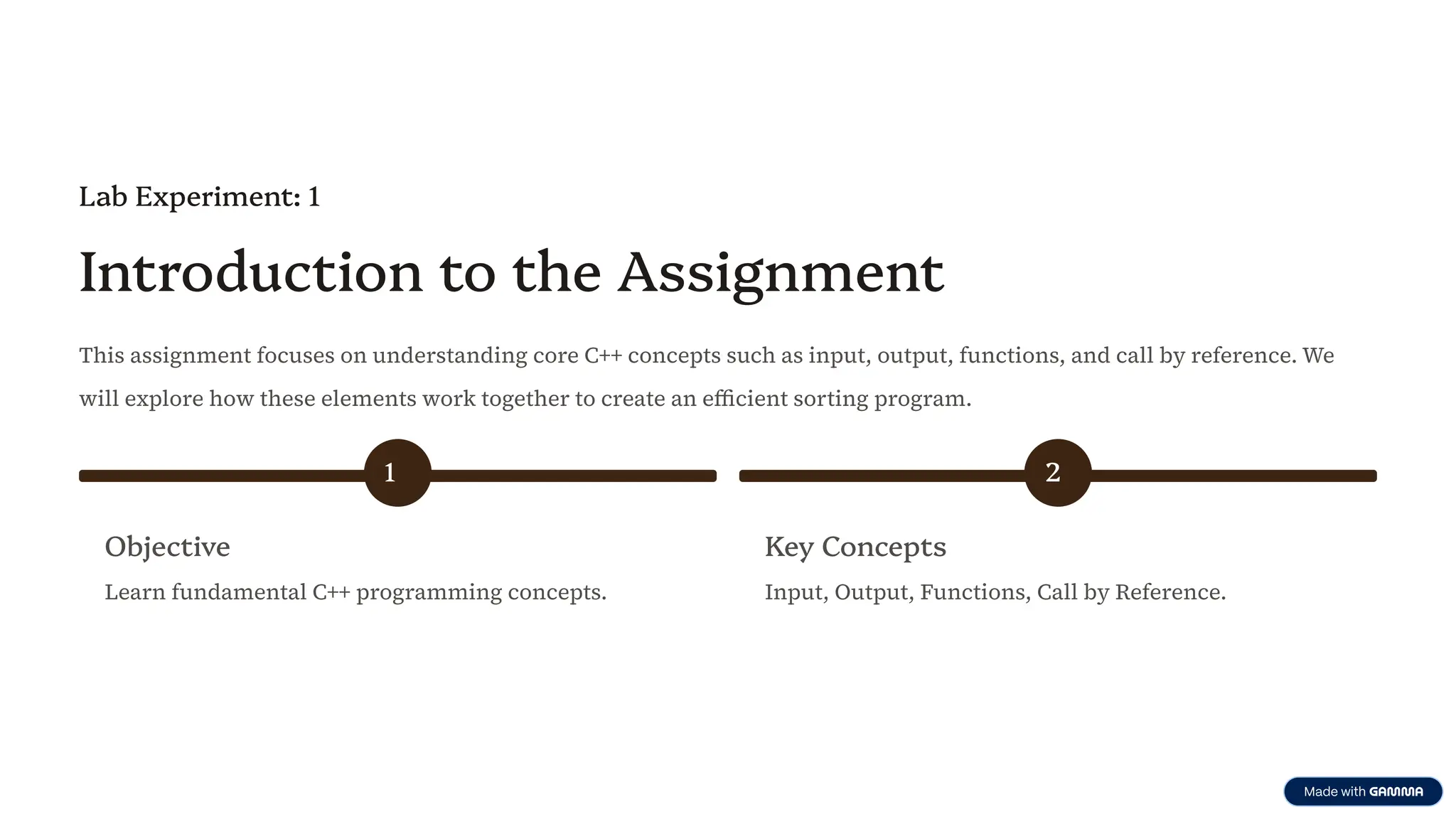
![Program Structure: Header and Main Function
The program begins with standard C++ includes and namespace declarations, followed by function prototypes for display, swap, and bubble sort. The main function initializes an
array and orchestrates the sorting process.
#include<iostream>using namespace std;void display(int *, int);void swapp(int &, int &);void bSort(int *,int); //bubblesortint main(){ int arr[5]; int
n=5; cout<<"Number of Elememts are:"<<n<<endl; cout << "Enter the 5 elements:" << endl; for(int i = 0; i<n; i++) { cin >> arr[i]; } cout << "Array
before Sorting: "; display(arr, n); bSort(arr, n); cout << "Array after Sorting: "; display(arr, n);}](https://image.slidesharecdn.com/c-arraysortingprogram-250819122051-971788b0/75/Presentation-on-C-Array-Sorting-Program-pdf-3-2048.jpg)
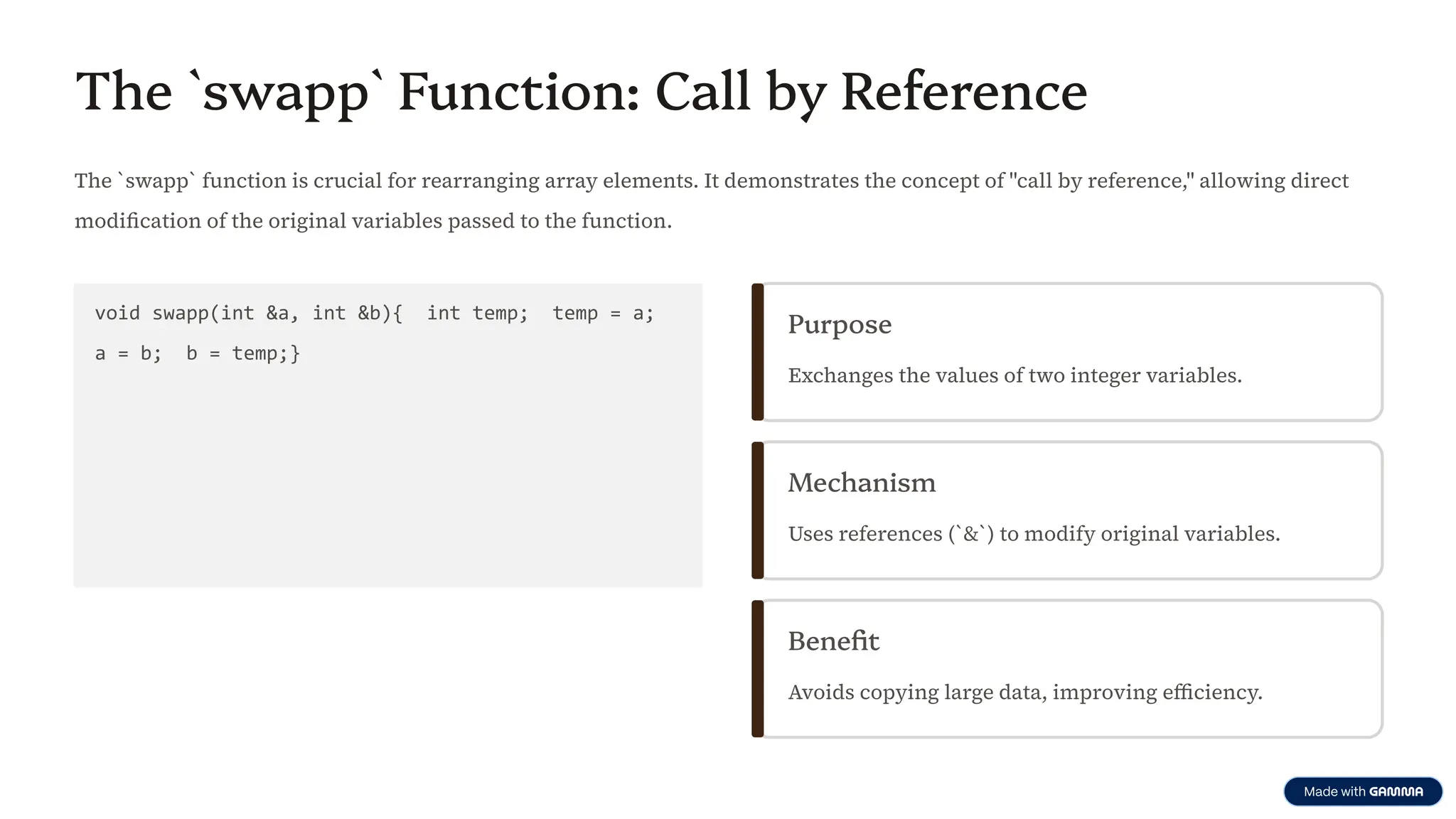
![The `display` Function:
Outputting Array Elements
The `display` function is responsible for printing the array's contents to
the console. It iterates through the array and outputs each element,
providing a clear view of the array's state before and after sorting.
void display(int *array, int size){ for(int i = 0; i<size;
i++) cout << array[i] << " "; cout << endl;}](https://image.slidesharecdn.com/c-arraysortingprogram-250819122051-971788b0/75/Presentation-on-C-Array-Sorting-Program-pdf-5-2048.jpg)
![The `bSort` Function: Bubble Sort Algorithm
The `bSort` function implements the Bubble Sort algorithm. It repeatedly steps through the list, compares adjacent
elements, and swaps them if they are in the wrong order. This process continues until the list is sorted.
void bSort(int *array, int size){ for(int i = 0; i<size; i++) { for(int j = 0; j<size-i-1; j++) {
if(array[j] > array[j+1]) swapp(array[j], array[j+1]); } }}](https://image.slidesharecdn.com/c-arraysortingprogram-250819122051-971788b0/75/Presentation-on-C-Array-Sorting-Program-pdf-6-2048.jpg)
